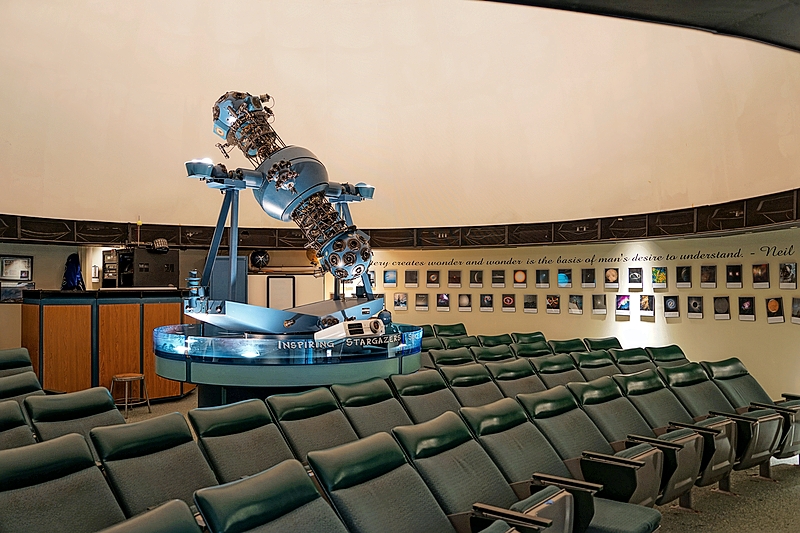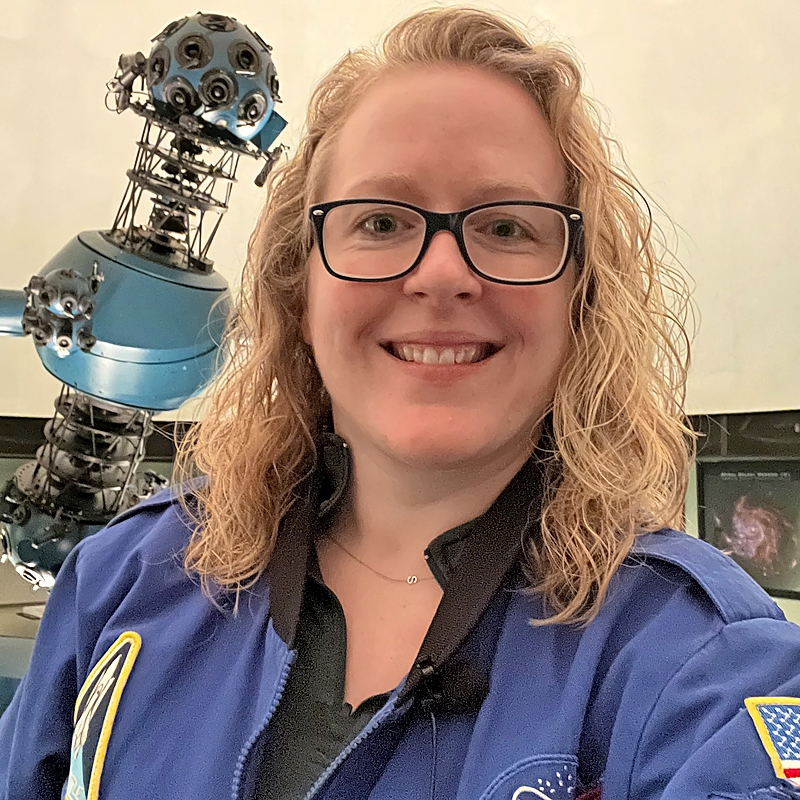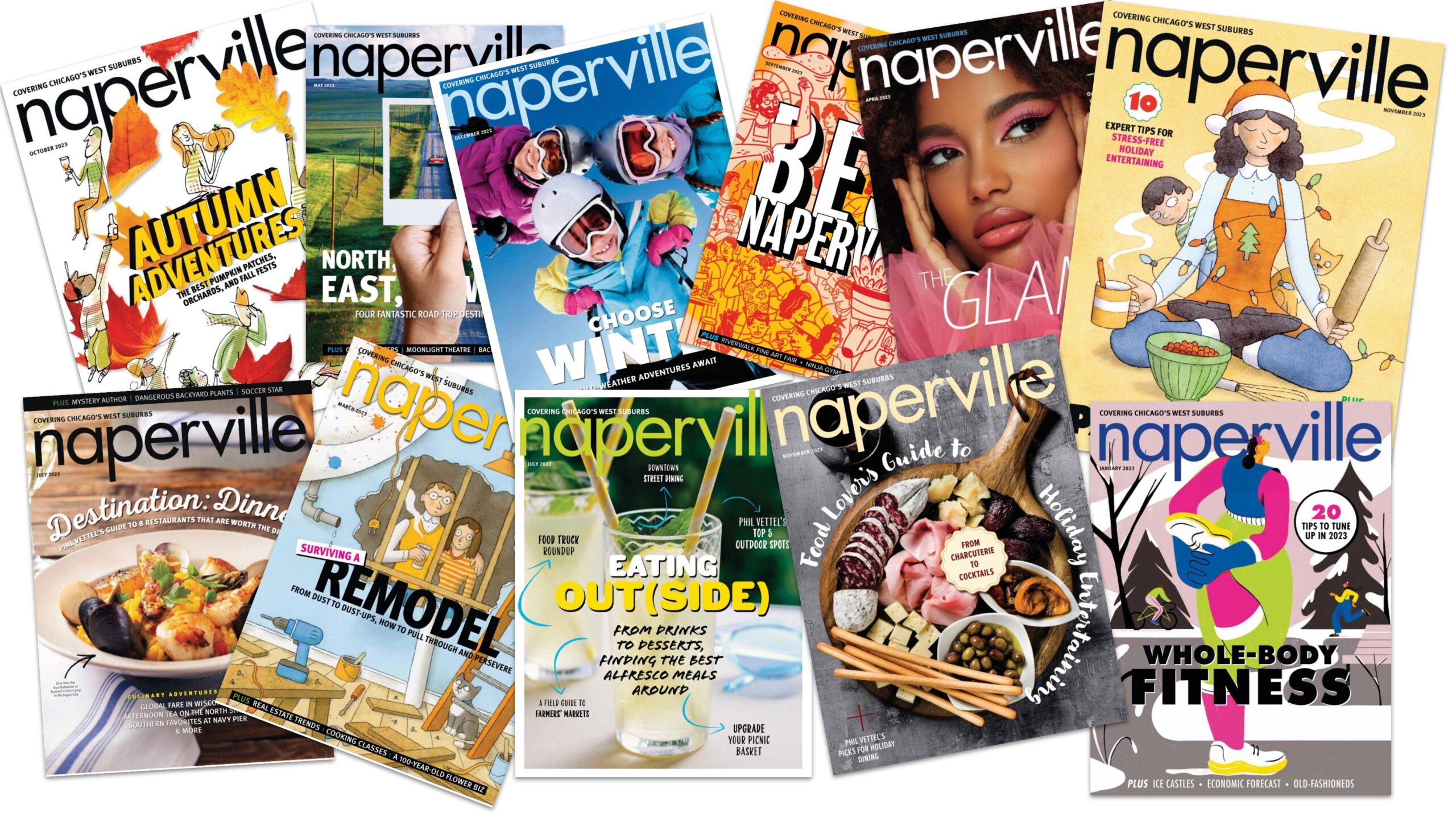Space to Learn
By Mark Loehrke
April 2024 View more Community
Waubonsie Valley’s planetarium is a cosmic classroom

While most science teachers demonstrate various principles in school labs, only one local instructor can regularly take her students to the stars—or at least bring the stars to them.
Stephanie Rybka has taught plenty of biology and chemistry over her 18 years at Waubonsie Valley High School, but her favorite part of the job is sharing her love of the night sky with the school and the community as caretaker of one of the area’s most unusual classrooms—a nearly 50-year-old planetarium (2590 Ogden Ave., Aurora). Built in 1975 and anchored by a star projector affectionately known as “Big Blue Guy,” the WVHS Planetarium creates an artificial sky (as opposed to an observatory, where telescopes are used to view the actual night sky)—including the sun, moon, stars, and planets—that moves to simulate the real sky, allowing observers to experience the increasingly rare phenomenon of a dark starry night free from light pollution.
“Big Blue Guy’s dark night sky is beautiful and awe-inspiring,” says Rybka, a recently designated NASA/JPL Solar System Ambassador who currently teaches an astronomy course called “Cosmic Journey,” in addition to serving as planetarium director. “Over the years, fewer and fewer visitors have ever experienced a truly dark sky outside, which is a shame. I think that’s part of what makes this planetarium so special. It always gets a ‘wow’ reaction.”

The planetarium serves to educate not only Waubonsie students but also budding astronomy buffs of all ages throughout Indian Prairie School District 204 and beyond. Having become part of the core curriculum department for the district in 2013 (IPSD 204 is one of only two public school districts in Illinois to feature this kind of K-12 programming), the planetarium hosted more than 8,000 students for field trips during the 2022–23 school year, with many more community members attending regularly scheduled Family Nights and Scout troop sessions as well. “Most visitors are surprised that the planetarium is original to WVHS and that it is a classroom rather than an observatory or theater or auditorium,” Rybka says. “Half of the school day is dedicated to high school science courses and the other half is for K-12 field trip lessons.”
While the planetarium hasn’t changed much over the past five decades or so, Rybka says her programming is constantly evolving, due in part to both changes in the K-12 science curriculum and a number of high-profile developments in the astronomy field, including new discoveries from the Hubble and James Webb space telescopes and renewed interest in missions to Mars and the moon. As a mom, she often finds new ways to appeal to the planetarium’s younger visitors, hoping to get them as inspired and excited about astronomy as she is. “I’m so happy to do what I love,” she says. “It’s such a joy to be able to share my passion and enthusiasm for astronomy in the most unique classroom in the state of Illinois.”
Seeing Stars
During the school year, the WVHS Planetarium invites the community to themed Family Nights one Friday night per month. This season’s final Family Night is April 12, with programs at 6 and 7 p.m. focusing on “Summer Stargazing.” The sessions are followed by free outdoor telescope viewing until 9:30 p.m. (weather permitting), courtesy of the Naperville Astronomical Association. Family Nights the will resume in September. Tickets are $5 a seat for ages 2 and older. For more information, visit ipsd.org/planetarium.
Photos: Nihara Sureshkumar (star projector); Stephanie Rybka (headshot)





